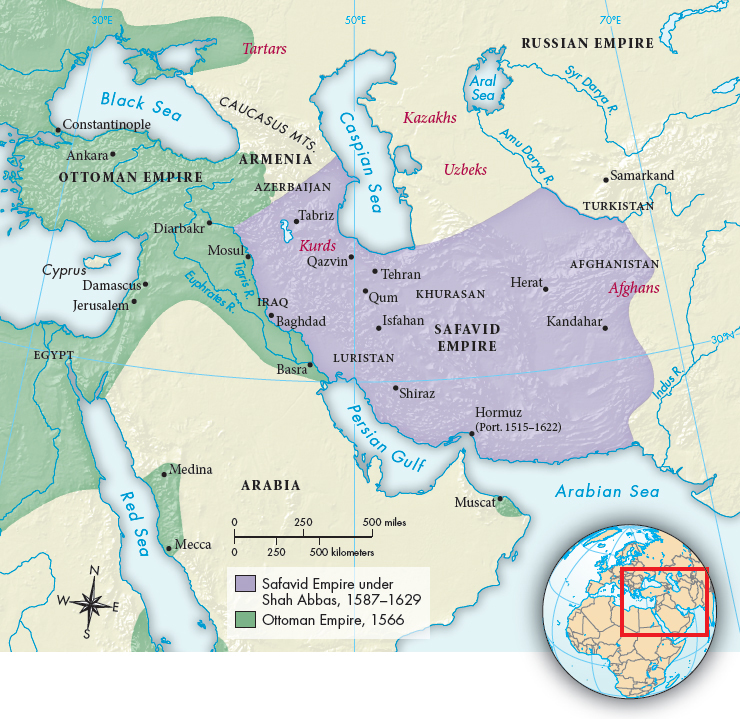The Safavid Empire in Persia
With the decline of Timur’s empire after 1450, Persia was controlled by Turkish lords, with no single one dominant until 1501, when fourteen-year-old Isma’il (1487–1524) led a Turkish army to capture Tabriz and declared himself shah (king).
The strength of the early Safavid state rested on three crucial features. First, it had the loyalty and military support of nomadic Turkish Sufis known as Qizilbash (KIH-zihl-bahsh). The shah secured the loyalty of the Qizilbash by granting them vast grazing lands. In return, the Qizilbash supplied him with troops. Second, the Safavid state utilized the skills of urban bureaucrats and made them an essential part of the civil machinery of government.
The third source of Safavid strength was the Shi’a faith, which became the compulsory religion of the empire. The Shi’a believed that leadership among Muslims rightfully belonged to the Prophet Muhammad’s descendants. Because Isma’il claimed descent from a line of twelve infallible imams (leaders) beginning with Ali (Muhammad’s cousin and son-in-law), he was officially regarded as their representative on earth. Isma’il recruited Shi’a scholars to instruct and guide his people, and he persecuted and exiled Sunni ulama.
Safavid power reached its height under Shah Abbas (r. 1587–1629), who moved the capital from Qazvin to Isfahan. His military achievements, support for trade and commerce, and endowment of the arts earned him the epithet “the Great.” In the military realm he adopted the Ottoman practice of building an army of slaves, who could serve as a counterweight to the Qizilbash, who had come to be considered a threat. He also increased the use of gunpowder weapons and made alliances with European powers against the Ottomans and Portuguese. In his campaigns against the Ottomans, Shah Abbas captured Baghdad, Mosul, and Diarbakr in Mesopotamia (Map 17.2). After Shah Abbas, Safavid power was sapped by civil war between tribal factions vying for control of the court.

MAP 17.2The Safavid Empire, 1587–1629In the late sixteenth century the power of the Safavid kingdom of Persia rested on its strong military force, its Shi’a Muslim faith, and its extraordinarily rich trade in rugs and pottery. Many of the cities on the map, such as Tabriz, Qum, and Shiraz, were great rug-weaving centers.
